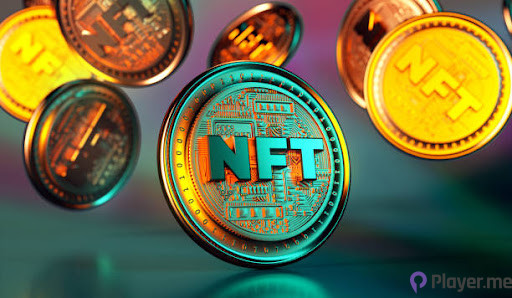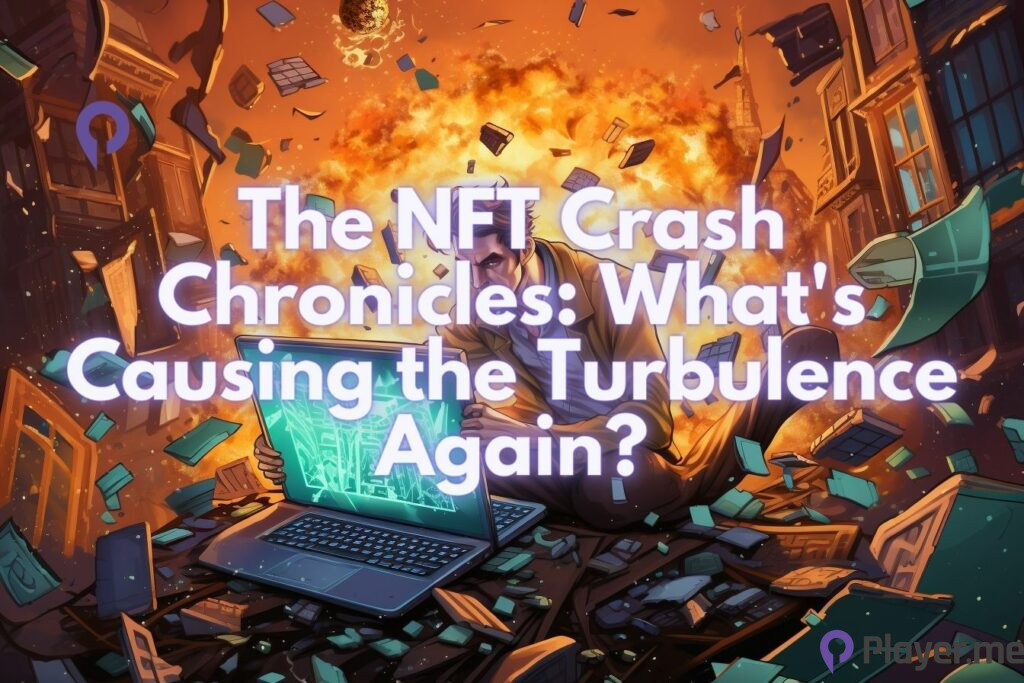NFT Market Peak and Plunge: Examining the Rise and Fall of NFT Prices
The NFT market experienced a peak in January 2022, boasting impressive trading volumes of $17 billion. This surge was fueled by several factors, including the novelty of NFT technology and the overall enthusiasm and speculation surrounding it. Furthermore, the booming cryptocurrency market added momentum and liquidity to the NFT sector.
However, the NFT market has since encountered a significant downturn. Trading volumes have plummeted substantially by 97% to $466 million in September. This decline can be attributed to various factors, including broader economic challenges such as rising inflation and central banks’ decisions to raise interest rates. These economic conditions have resulted in a decrease in investors’ willingness to take risks.
Additionally, the cryptocurrency market, closely linked to NFTs, has experienced a decline in value, further impacting the demand for NFTs. This combination of economic and market factors has contributed to cooling the NFT market after its earlier peak. Understanding these dynamics helps shed light on the market’s evolving nature and response to external influences.
Challenges in the NFT Ecosystem: Factors Beyond FUD Impacting the Market
While Fear, Uncertainty, and Doubt (FUD) have historically influenced the NFT market, the current challenges extend beyond these familiar elements. Prominent NFT projects, such as the Bored Ape Yacht Club (BAYC) and Azuki, have encountered headwinds reshaping market dynamics. These challenges are notably more nuanced, with factors like dilution and fragmentation playing a significant role.
For instance, BAYC and Azuki have witnessed their floor prices decline, contrary to their historical resilience. The disenchantment among BAYC holders due to actions by Other Side and HV-MTL and Azuki’s controversial expansion into Azuki Elementals has contributed to this downward trend. While dedicated holders remain, the critical interplay between buyers and sellers ultimately drives prices, and a lack of new buyers has led to gradual declines. These unique challenges are redefining the NFT ecosystem in 2023.
In the context of NFTs, their rapid appreciation of value and celebrity endorsements added to the excitement. High-value NFTs, like BAYC or CryptoPunks, hold a particular allure and prestige. This led to many crypto enthusiasts showcasing their NFT holdings, like displaying a luxury car as a symbol of prosperity.
Also Read: NFTs on OpenSea: Riding the Wave as Digital Asset Prices Dip
Wash Trading: The Hidden Force Behind NFT Market Volatility

Wash trading, a practice where assets are bought and resold to inflate prices artificially, played a significant role in the volatile NFT market. Unlike traditional securities, the crypto and NFT markets lack regulations against wash trading, allowing it to flourish. Research conducted by Dune Analytics revealed that over 80% of NFT trading volume was attributed to wash trading in January 2022.
One striking example exposed an NFT trader who sent NFTs to hundreds of “Self-financed” addresses, highlighting the extent of wash trading. While wash trading may temporarily boost prices, it doesn’t align with long-term market sentiment, resulting in eventual price corrections. Unfortunately, the absence of regulatory measures means that wash trading continues to pose a challenge, contributing to price instability in the NFT market.
Crypto Market Influence on NFT Price Swings: Understanding the Interconnectedness
The crypto and NFT markets share a close relationship, though only sometimes in perfect sync. During the crypto market peak in late 2021, Bitcoin reached almost $70,000 with a market cap exceeding $3 trillion. However, this initial surge didn’t immediately impact NFT prices negatively. In January 2022, weekly NFT trading volumes reached $1.6 billion.
This delayed reaction suggests a time lag between crypto and NFT market movements. NFTs possess sentimental value, leading investors to hold onto them longer. Nevertheless, crypto market events can have repercussions in the NFT space. The November 2022 FTX crash caused minor declines in both crypto and NFT prices, underlining their interconnectedness.
Macroeconomic Forces and NFT Market Shifts: A Closer Look at Economic Conditions
Macroeconomic conditions exerted a substantial influence on the 2022 NFT market crash. In 2020 and part of 2021, government stimulus payments increased consumer purchasing power, boosting investments in riskier assets such as crypto and NFTs. However, as savings rates dropped by mid-2022, disposable income decreased, leading to changes in consumer behaviour.
Rising inflation further strained individuals’ finances, impacting NFT prices. In April 2022, inflation soared to 8.3%, peaking at 9.1% in June 2022. Economic scarcity prompted investors to de-risk portfolios, often starting with high-risk NFTs. These macroeconomic shifts undoubtedly contributed to the NFT market’s decline.
Asset Concentration and NFT Price Stability: The Impact of Collection Dominance

The NFT market’s lack of asset diversity significantly affected its volatility. For instance, in May 2023, Mutant Ape Yacht Club (MAYC) held a market cap of $834 million, representing around 27% of the entire NFT market cap. Similarly, BAYC claimed a $381 million market cap, approximately 40% of the total NFT market cap.
The concentration of value in a few collections meant that a downturn in one of them had a ripple effect across the entire market. Future NFT market stability may hinge on diversifying assets, similar to traditional markets where such concentrated dominance is rare.
Macro Factors Shaping NFT Market Dynamics: ETH, Regulations, and Brand Engagement
In the broader context of the NFT market, several macro factors exert significant influence. Firstly, the volatility of Ethereum (ETH) plays a pivotal role, as rising ETH prices often prompt traders to either secure profits or restructure their portfolios to hedge against market fluctuations.
Additionally, increased governmental oversight and regulatory measures impact the NFT space, introducing uncertainty and compliance challenges for participants. Furthermore, the NFT market is witnessing a decline in major brands entering the space, with the term “NFT” becoming less prominent in popular culture compared to its initial boom, signalling shifting trends in brand engagement with this technology. These macro forces collectively contribute to the evolving landscape of the NFT market in 2023.
To read more information about NFT Marketplace, you may visit here.
Conclusion
The NFT market’s recent turbulence stems from a complex interplay of factors. While initial excitement drove prices to dizzying heights, concerns over sustainability, copyright issues, and market oversaturation have sparked a corrective phase.
This rollercoaster ride highlights the need for careful evaluation and a deeper understanding of the NFT space. As the market matures, its resilience and long-term viability depend on adaptability and responsible practices. Investors and creators should stay informed and tread cautiously in this ever-evolving digital frontier. Moreover, there will be another interesting topic regarding bitcoin: https://player.me/solana-jumps-on-visa-stablecoin-announcement-as-bitcoin/
Frequently Asked Questions
Why Are Bored Ape Yacht Club (BAYC) and Azuki Facing Challenges in the NFT Market?
Bored Ape Yacht Club and Azuki, once shining stars in the NFT space, have encountered difficulties due to internal issues. Factors such as dilution within their communities and contentious expansions, like Azuki Elementals, have led to declining floor prices and investor uncertainty.
What Role Does the Blur Platform Play in Recent NFT Market Dynamics?
The Blur platform has risen to prominence in the NFT market, largely thanks to its native token, $BLUR. This token, combined with a royalty-free marketplace, has attracted high-profile collectors. However, concerns have arisen regarding whether $BLUR’s popularity for token farming might influence NFT prices, potentially impacting the broader NFT ecosystem.
How Are Broader Economic Conditions Impacting the NFT Market?
Broader economic factors, such as rising inflation and interest rates, influence the NFT market. These conditions have led to a reduced risk appetite among investors, affecting the behaviour of collectors and traders. This has contributed to the recent decline in the NFT market’s performance.





